It looks like you're using an Ad Blocker.
Please white-list or disable AboveTopSecret.com in your ad-blocking tool.
Thank you.
Some features of ATS will be disabled while you continue to use an ad-blocker.
share:
Interesting goddess figure. Long skirt, holding a basket of some kind. Sumerian, kind of? Not old enough, obviously.
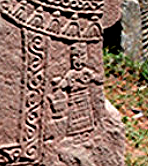

edit on 16-10-2017 by Blue Shift because: (no reason given)
a reply to: Blue Shift
I would disregard the attempts to date this. Only date mentioned was carbon dating wood in the towers anyway.
Its interesting that the point was made on the towers that they really don't work well as silos or defense. Same thing was said about the old towers in Ireland ect. Researcher, Tomkins, well know, say they were towers tuned to reflect solar and lunar.....let us say qualities as not to overwhelm....that were transferred to the grain growing in the surrounding fields.
I would disregard the attempts to date this. Only date mentioned was carbon dating wood in the towers anyway.
Its interesting that the point was made on the towers that they really don't work well as silos or defense. Same thing was said about the old towers in Ireland ect. Researcher, Tomkins, well know, say they were towers tuned to reflect solar and lunar.....let us say qualities as not to overwhelm....that were transferred to the grain growing in the surrounding fields.
originally posted by: SlapMonkey
a reply to: theantediluvian
I can't access the link right now (network restrictions), but this looks really interesting.
It's hard to tell from the two images that you embedded, but am I the only one that gets a Mayan feel in the way that those horses are decorated?
Yes, you're the only one.
That's a Celtic style of artwork, not Mayan/South American/Central American.
There would be multiple riders in a retreat or rout from battle. Otherwise it is useless. Three to a horse destroys the horse and the three cannot
perform.
originally posted by: theantediluvian
Interestingly, the statues depict multiple riders per horse. From those I can see in the pictures, there appear to be three on each horse. Also worth noting is that many but not all are missing their heads. You can also make out parts of a wall and other structures in one of the pictures along with some large rectangular carved stones — one still standing and another on its side.
Fascinating!
Look closer. That's not multiple riders... it's multiple heads.
The Celts had a "cult of the head" where they took the heads of fallen foes (and often preserved them as trophies) - However, I don't think these are Celtic artifacts since the Celts were absorbed into other cultures by that time and the cult of the head did not exist.
I think what you're seeing is horses depicted carrying multiple heads.
a reply to: Byrd
Nah, they're whole bodies. They have legs if you look.
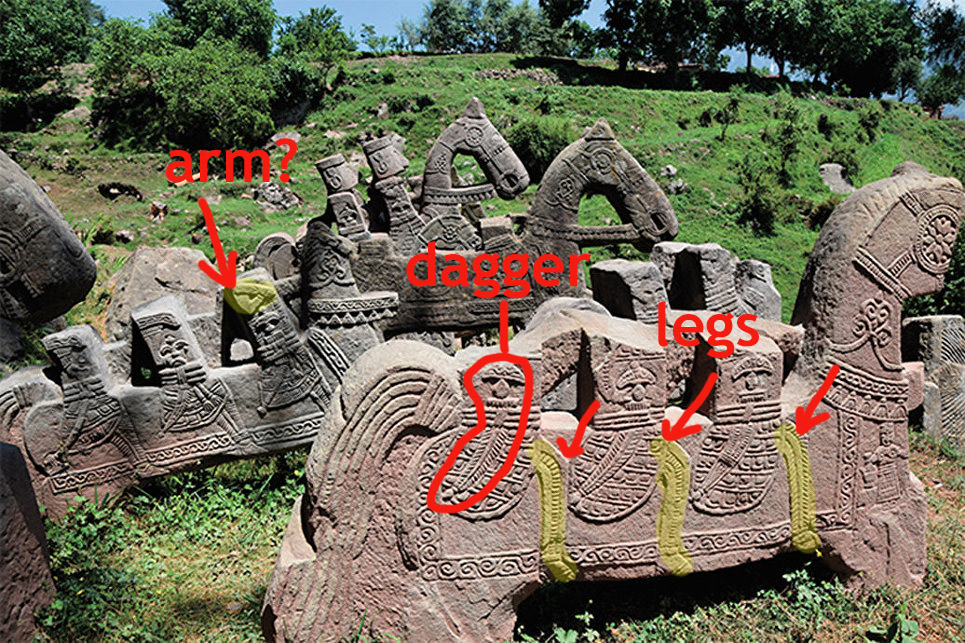
They've got what look like daggers in their belts and they're wearing pants and... tunics or some sort I guess you'd call them? Possibly coats. What would Celts be doing in Kashmir anyway? They didn't get any further East than the Galatians in Anatolia did they?
Nah, they're whole bodies. They have legs if you look.

They've got what look like daggers in their belts and they're wearing pants and... tunics or some sort I guess you'd call them? Possibly coats. What would Celts be doing in Kashmir anyway? They didn't get any further East than the Galatians in Anatolia did they?
a reply to: theantediluvian
Reminds of the movie Mummy: Tomb the Dragon Emperor. I wonder if there's a magical artifact that can turn them to life?
Reminds of the movie Mummy: Tomb the Dragon Emperor. I wonder if there's a magical artifact that can turn them to life?
a reply to: theantediluvian
Seriously surprised Kantzveldt is not piping in on this thread...although they appear to MIA...
Interesting to say the least
Seriously surprised Kantzveldt is not piping in on this thread...although they appear to MIA...
Interesting to say the least
a reply to: Byrd
I believe the word I was searching for in regards to their attire is gambeson. They look quilted with belted (ropes, one has tassels) waists. The meanders on the borders of the blanket aren't very helpful. They're a basic running scroll. Other noticeable features are the tassels on the reins. The cheek piece of the bridles has a floral motif. The swords are curved with some sort of crescent pommel it looks like. The scabbards have a balls at the bottom. Kinda Near Easty.
There's also the small figure that Blue Shift pointed out that appears to be carrying a bucket or basket of some sort and is wearing some sort of long skirt/robe.
I believe the word I was searching for in regards to their attire is gambeson. They look quilted with belted (ropes, one has tassels) waists. The meanders on the borders of the blanket aren't very helpful. They're a basic running scroll. Other noticeable features are the tassels on the reins. The cheek piece of the bridles has a floral motif. The swords are curved with some sort of crescent pommel it looks like. The scabbards have a balls at the bottom. Kinda Near Easty.
There's also the small figure that Blue Shift pointed out that appears to be carrying a bucket or basket of some sort and is wearing some sort of long skirt/robe.
well at least they were discovered and reported on is muslim controlled lands archeological treasures are destroyed quite regularly upon
discovery.
a reply to: theantediluvian
Yeah, I'd definitely go with Incan as well. Sadly, my brain always defaults to "Mayan" when I think about Mesoamerican early cultures, and I type the word before I truly think about it.
Regardless, it's obviously not Mesoamerican...maybe it's jus the blockiness of everything that makes me think that.
Yeah, I'd definitely go with Incan as well. Sadly, my brain always defaults to "Mayan" when I think about Mesoamerican early cultures, and I type the word before I truly think about it.
Regardless, it's obviously not Mesoamerican...maybe it's jus the blockiness of everything that makes me think that.
edit on 17-10-2017 by
SlapMonkey because: (no reason given)
a reply to: Byrd
Well, obviously I wasn't the only one, even though it's obviously not the correct answer given the location (my comment was more to passively note how similar some of these ancient styles are to each other at first glance).
I find my last comment concerning style to be close: Pictish. I understand that it and the Celtic style are relatively similar, so what would make you differentiate and say the style is Celtic versus Pictish? I understand that timelines and whatnot may not line up, but timelines/dating have been wrong before.
I wonder if this is somehow a commemoration of a defeat and that these horses are depictions of the enemy fleeing (hence the multiple riders on each horse)...like what TinfoilTP noted. Otherwise, like TTP said, this would destroy the horses.
Well, obviously I wasn't the only one, even though it's obviously not the correct answer given the location (my comment was more to passively note how similar some of these ancient styles are to each other at first glance).
I find my last comment concerning style to be close: Pictish. I understand that it and the Celtic style are relatively similar, so what would make you differentiate and say the style is Celtic versus Pictish? I understand that timelines and whatnot may not line up, but timelines/dating have been wrong before.
I wonder if this is somehow a commemoration of a defeat and that these horses are depictions of the enemy fleeing (hence the multiple riders on each horse)...like what TinfoilTP noted. Otherwise, like TTP said, this would destroy the horses.
a reply to: theantediluvian
Looking at the standing pillar in the midst of all these statues, appears to have a carving of an individual or god? Does the articles describe this carving? Was it used in the dating as well? Also, does it state which direction all of these horses are facing on this hillside?
Pretty amazing find! Such a big structured site with 200 horses and 600 riders, it is amazing that it was just found now.
Looking at the standing pillar in the midst of all these statues, appears to have a carving of an individual or god? Does the articles describe this carving? Was it used in the dating as well? Also, does it state which direction all of these horses are facing on this hillside?
Pretty amazing find! Such a big structured site with 200 horses and 600 riders, it is amazing that it was just found now.
If you look at KAshmiri sculpture from 0 AD on, if not before, they were keen on rounded, less abstract works.
www.google.com... 7.48633.0.48920.6.6.0.0.0.0.69.388.6.6.0....0...1.1.64.psy-ab..0.0.0....0.e0M-1c6AFO0
www.google.com... 7.48633.0.48920.6.6.0.0.0.0.69.388.6.6.0....0...1.1.64.psy-ab..0.0.0....0.e0M-1c6AFO0
i wonder if there is some meaning to the 3 riders on horseback. its not something ive ever really seen done nor can i picture 3 people horseback. it
seems that every one i look at in pictures has 3 riders although some im unsure of due to the lack of resolution. im also amazed that the heads of the
horses have stayed so intact versus the riders on the back. youd think the head would be the first part to break off having all the leverage on such a
small bit of stone. great craftsmanship
edit on 17-10-2017 by TheScale because: (no reason given)
a reply to: CynConcepts
Neither article describe the carvings on the pillar nor the give the direction the horses are facing though all the ones visible do seem to be facing the same direction.
Neither article describe the carvings on the pillar nor the give the direction the horses are facing though all the ones visible do seem to be facing the same direction.
originally posted by: theantediluvian
a reply to: TheScale
I'm guessing the heads were deliberately removed. Why would they naturally cleave off like that? But why would somebody remove all but a couple heads?
if i had to take a guess going off the shadows id say they are facing east although theres some right at the bottom of the photo the op linked that are facing directly at the camera. it looks almost like they may form a semi circle around something imo but theres really only a few photos to go on that i can find.
edit: weird that was meant for your other post. in regards to the heads, yeah i find it strange 2. if it was someone just wanting some treasure the horse head would be nice aswell except it is abit larger and im sure heavier.leads me to think maybe the people werent too well liked by the natives at some point but horses were revered so they were left untouched
edit on 17-10-2017 by TheScale because: (no reason given)
Found another article with additional pictures. This time in Spanish.
Discover hundreds of strange sculptures in the Himalayas
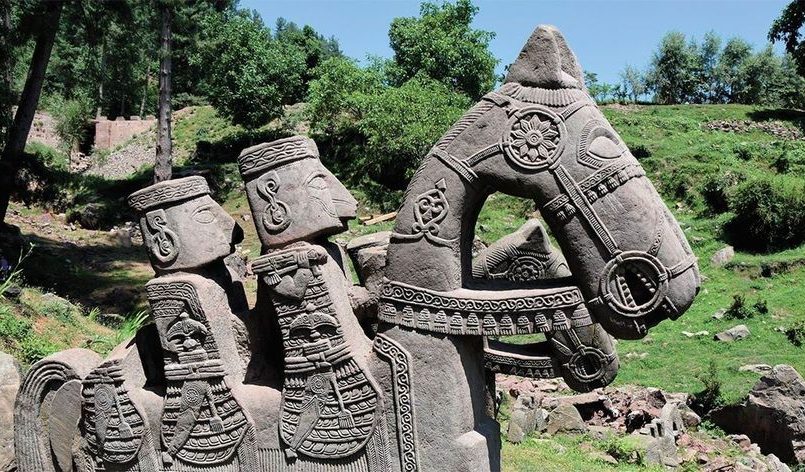
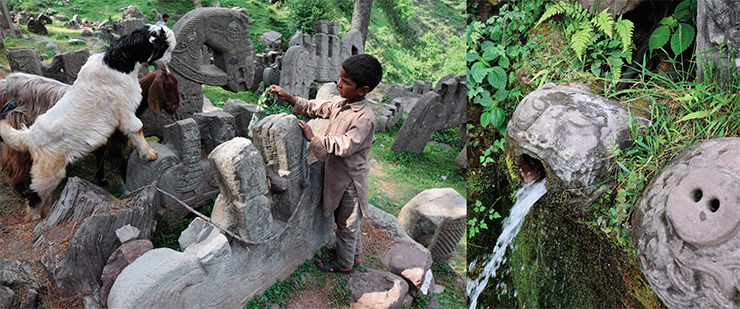
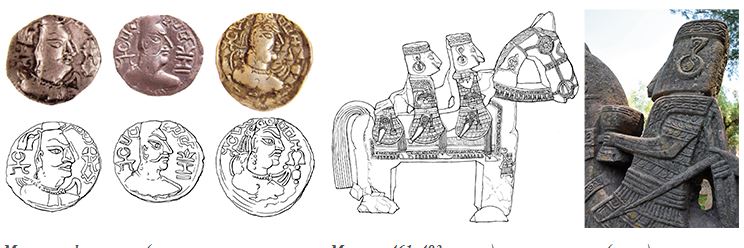
Discover hundreds of strange sculptures in the Himalayas
In the mountains of Pir Panjal Range of the Western Himalayas, a team of archaeologists discovered about 200 sculptures of riders with extraordinary details, unique pieces of a culture until now unknown, possibly dating from the sixth to seventh century.
From the faces there is an insinuation that corresponds to the Heftalite people.
In the area, a Russian Hindu expedition led by researcher Natalia Polosmak made the discovery after excavating at 2,000 meters, reported in October the Institute of Archeology and Ethnography of the Siberian Academy of Sciences.
The sculptures are accompanied by plates with images of people and animals, stone pedestals and stone basins covered with stone slabs.
The report by the Russian academy concludes that the unknown horsemen were "ancestral heroes", who traveled to India.
" They may be monuments to fallen soldiers, but we still can not say this, since the study and interpretation of these unique monuments is yet to come," said Natalia Polosmak.
Of the three tribes known as Eftalites, and settled in northern India, the institute singled out the Radzhaputov, whose descendants are the Dogri tribes.
" They still inhabit some of the mountainous areas of the country, now including places like this where these unique sculptures are located," Polosmak said.



new topics
-
Nvm
General Chit Chat: 1 hours ago -
OK this is sad but very strange stuff
Paranormal Studies: 7 hours ago -
Islam And A Book Of Lies
Religion, Faith, And Theology: 8 hours ago -
Sorry to disappoint you but...
US Political Madness: 11 hours ago
top topics
-
Sorry to disappoint you but...
US Political Madness: 11 hours ago, 13 flags -
Watch as a 12 million years old Crab Emerges from a Rock
Ancient & Lost Civilizations: 15 hours ago, 10 flags -
OK this is sad but very strange stuff
Paranormal Studies: 7 hours ago, 6 flags -
Islam And A Book Of Lies
Religion, Faith, And Theology: 8 hours ago, 5 flags -
Nvm
General Chit Chat: 1 hours ago, 1 flags
active topics
-
Islam And A Book Of Lies
Religion, Faith, And Theology • 4 • : glend -
This is why ALL illegals who live in the US must go
Social Issues and Civil Unrest • 36 • : Cracka -
Musk calls on King Charles III to dissolve Parliament over Oldham sex grooming gangs
Mainstream News • 181 • : Oldcarpy2 -
Volcano Watch 2025
Fragile Earth • 7 • : Cracka -
Meta Llama local AI system is scary good
Science & Technology • 40 • : glend -
The Acronym Game .. Pt.4
General Chit Chat • 1035 • : bally001 -
Joe Biden gives the USA's Highest Civilian Honor Award to Hillary Clinton and George Soros.
US Political Madness • 49 • : ADVISOR -
Nvm
General Chit Chat • 1 • : Mantiss2021 -
Post A Funny (T&C Friendly) Pic Part IV: The LOL awakens!
General Chit Chat • 7993 • : Cymru -
ILLUMINATION: Dimensions / Degrees – Da Vincis Last Supper And The Philosophers Stone
Secret Societies • 6 • : Compendium
